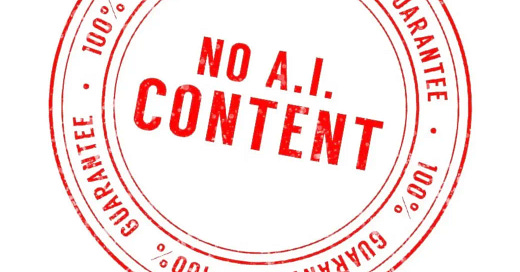Every Substack should disclose its use of AI.
Many, many, many of the Substacks you support and perhaps pay for are produced using AI.1
This may or may not influence whether you subscribe and pay, but subscribers deserve to know if the human we’re paying actually wrote the words that human is professing to have written.
Transparency matters.
If the very idea of disclosing your use of AI makes you panic a little (or a lot), you’ve likely been passing off AI-produced posts as your own.
Or you’re using AI but unsure how you feel about doing so.
Either way, take this as an amazing opportunity to get clear on how AI will fit into your life on Substack—as a subscriber and creator.
Below, I walk you through:
the issues surrounding AI and Substack;
exactly how to write your AI policy; and
real, non-AI-generated examples of how other people have written theirs.
Issues to consider
Should Substack ban AI-generated content?
Substack isn’t our dad. It’s just the platform we use to bring our work to the world. Our AI policy is our responsibility.
That said, nearly every media publication makes its use of AI transparent as a courtesy to subscribers. Substack should encourage us to do the same.
I would like to see
, , , and the add a place for Substack’s AI policy in our dashboard Settings.Becoming a paid subscriber means you value human-derived, non-AI-produced, proven strategies. Everything I teach comes from the Substack Strategy Framework I created helping thousands at Substack Writers at Work and over 700 private clients. We can’t stop people and AI from stealing my work and passing it off as their own, but we can put a premium on real guidance. Become a paid subscriber today.




